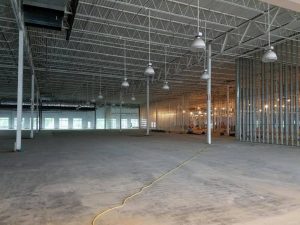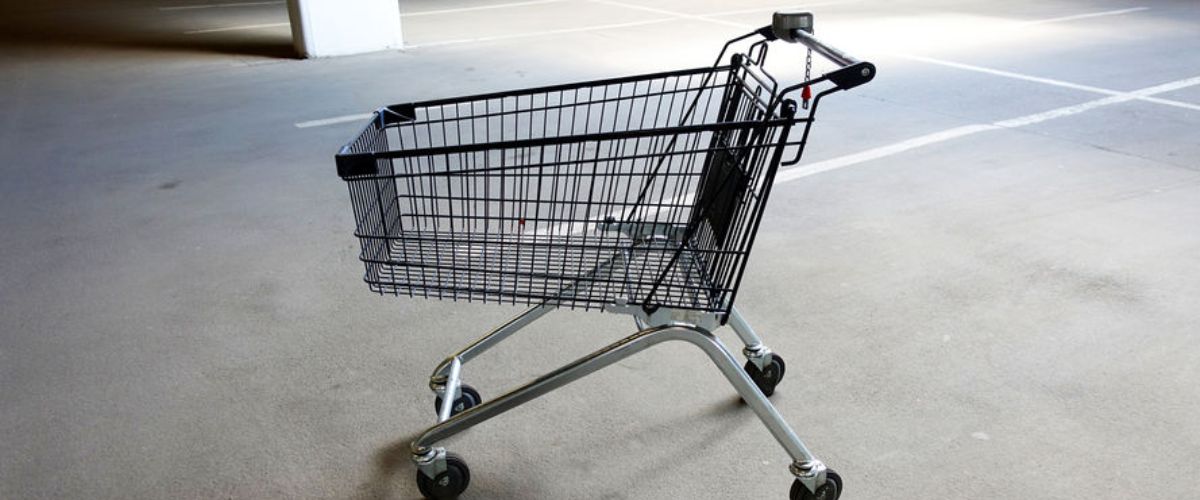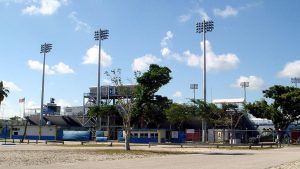Just off Independence Boulevard, workers are resurrecting an old Super Kmart into a new incarnation: A call center and office space, the latest example of owners finding new uses for a defunct big-box store.
Over on Arrowood Road, a former Walmart is also being reshaped into office space and a call center. And on Freedom Drive, workers are renovating another former Kmart into a charter school.
It’s happening across the U.S.: More developers are looking at how to creatively reuse empty big-box stores, titans of the American retail landscape that now face ever-increasing pressure from online retailers and specialty shops. Elsewhere, empty stores have become libraries, gyms, even churches.
“It’s a cool repurposing of the buildings,” said Tom Fitzgerald, vice president at JLL, which is marketing the former Super Kmart, now known as INQ@2401.

The interior of a former Kmart and Steve & Barry’s store on Sardis Road North in Charlotte, NC. The store is one of several vacant big box retailers that’s getting a new life – in this case, as office space. (PHOTO CREDIT: Ely Portillo Charlotte Observer)
The store was most recently a Steve & Barry’s apparel shop, before that company went bankrupt. Verizon has signed a lease for more than half of the 165,000-square-foot building, and is planning to move hundreds of workers to a new call center there this fall.
Kmart is owned by Sears Holdings, a company that’s been shuttering hundreds of stores in a bid to survive. In January, the company added its Concord store to the list of closures. Department stores such as Macy’s and JCPenney have been aggressively closing stores to try to boost their results, while companies like Walmart and Target that opened thousands of new mega-stores in recent decades are throttling back their store counts, trimming unprofitable locations.
And when those stores close, they can leave a big hole – especially when they’re standalone stores surrounded by acres and acres of parking. The empty parking lots and giant, fading shadows of store logos are hard to miss, and they send an unmistakable signal: Hey, this place is struggling.
But the very things that make empty big-box stores such prominent blights when they fold can also make them attractive targets for redevelopment. High ceilings, totally open floor plans and walls that can be knocked out for big windows mean the buildings work as office space. And the huge parking lots that the buildings come with mean they can offer exceptionally high amounts of parking free to employees – eight spaces or so per 1,000 square feet, well above what even most suburban office parks provide. All those parking spaces and wide-open floor plans mean tenants can fit a large number of employees into a dense arrangement of workstations, making an empty Kmart or Walmart particularly conducive to rebirth as a call center.
That was part of the allure for White Oak Real Estate Advisors, which bought a former Walmart on East Arrowood Road for $3.8 million last month. The building had been owned by the adjacent Victory Christian Center, which used it for various purposes, including a Salvation Army center. Now, work is underway to turn the building into high-density office and call center space. The building has a high parking ratio – again, eight spots per 1,000 square feet of office space – and is also adjacent to the Arrowood Station on the Blue Line light rail.
Jessica Brown of Cushman & Wakefield, who is marketing the property to prospective tenants, said that combination of light rail access and lots of parking means companies can fit even more employees into the building.
“You can stack the density even greater if you need to,” said Brown. Another important advantage a reused retail building has over a new structure: Quicker construction and fewer delays. You know for certain you can deliver it within a specific time frame. The ability to deliver quickly, with no variables, is huge.”
The Movement Foundation is on track to open a new charter school this year on Freedom Drive, in a defunct Kmart the group purchased for $4.3 million. The nonprofit, affiliated with Movement Mortgage, is spending almost $8 million more renovating and refurbishing the property.
‘It Was In Terrible Shape’
When Peter Tonon saw the vacant Super Kmart on Sardis Road North, his first thought was: “When I moved here 22 years ago, that was the first place I bought diapers for the kids. It was in terrible shape,” said Tonon, a partner at Mainstreet Capital Partners. But he saw potential in the site, which he bought in 2015 with DRA Advisors for $3.4 million. Now, with a new roof, HVAC system and windows, and Verizon leasing more than 90,000 square feet, Tonon said the investment is paying off. About 72,000 square feet are still available.
Even with the renovation costs, Tonon said buying a dead big-box store is more cost-effective than building new, especially with construction costs rising. Also, there aren’t a lot of sites that large within the city limits that have so much parking and a large structure already built.
“We’re in it for a lot less than it would cost to build this kind of thing,” said Tonon. “To get 24 acres and lay out that parking, wow. That’s pretty tough to do. Maybe out in the sticks.”
‘
Source: Miami Herald







